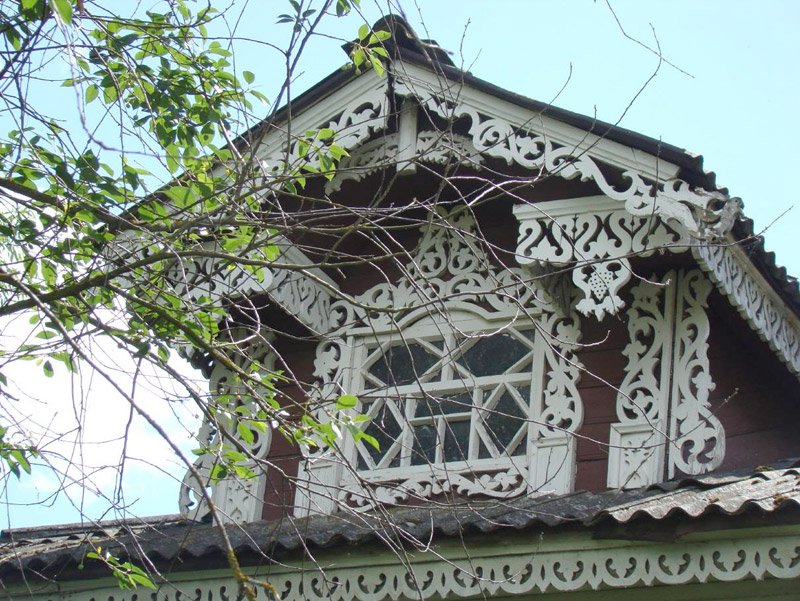#4096. Openwork Wooden Façade: Lace-like Heritage of Russian Folk Architecture
The photograph showcases a magnificent example of Russian wooden architecture — a fragment of a traditional wooden house with a richly decorated pediment. This is a typical example of vernacular architecture, presumably from the late 19th to early 20th century. Particular attention is drawn to the exquisite carving executed in the technique of openwork (pierced) woodwork, characteristic of Russian wooden décor.
The façade features impressive artistic ornamentation, where the main emphasis is placed on the delicate openwork framing. Cornices and window surrounds are adorned with elegant floral and geometric patterns. The pediment is generously decorated with carved elements that create an airy, lace-like composition. Such rich detailing is characteristic of wooden Art Nouveau and late Eclecticism in folk architecture.
The central element of the composition is the window on the pediment, framed by a skillfully crafted carved platband with distinctive motifs. The structural elements of the façade are accentuated by decorative embellishments, making the building not just a residential structure but a true work of folk art. The visible condition of the house speaks to its age and the need for restoration, yet the finesse of the woodworkers' craftsmanship retains its expressiveness even after decades.
